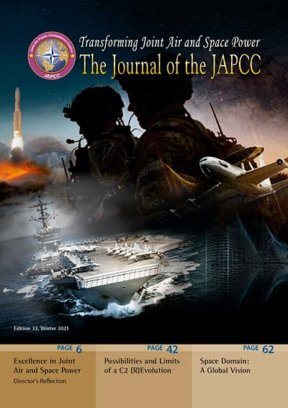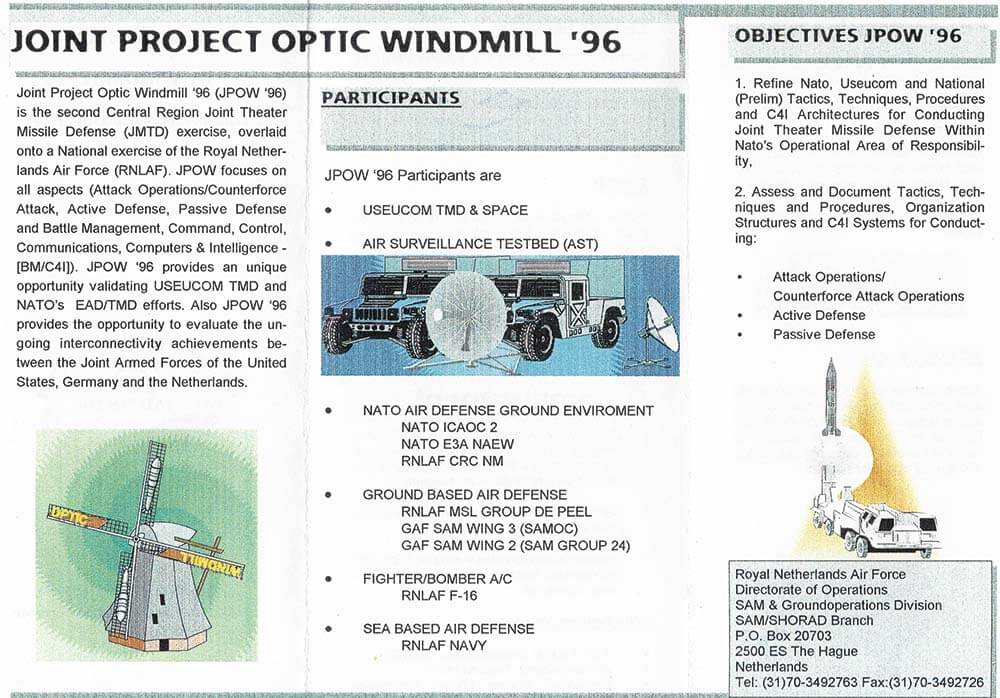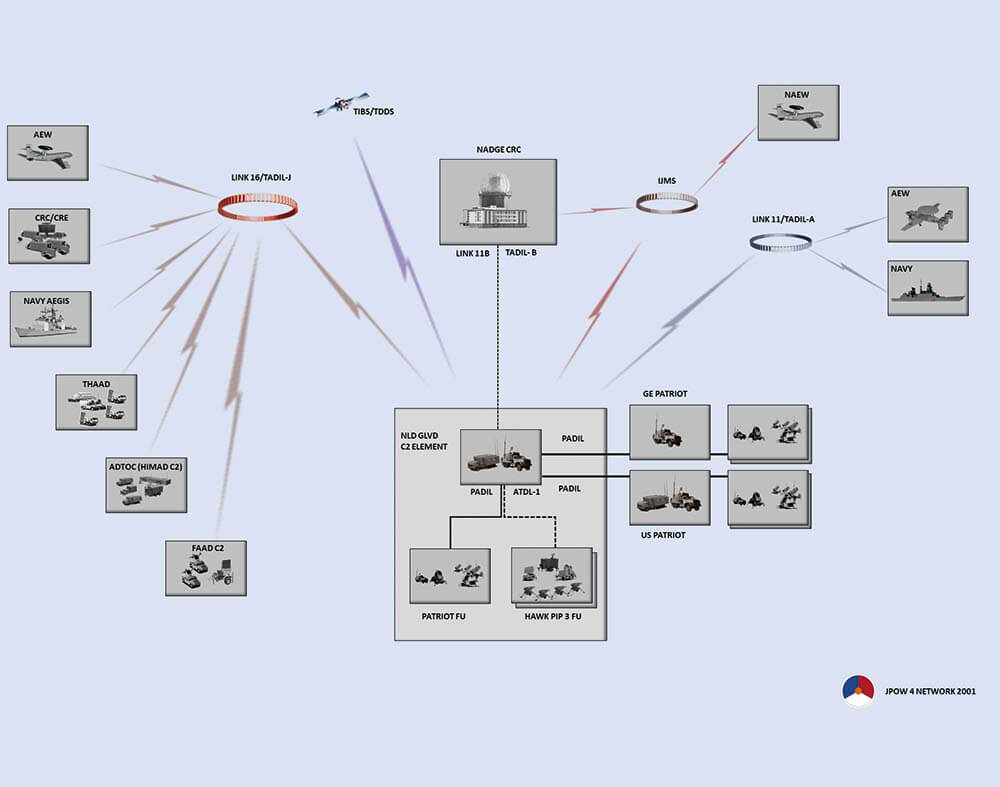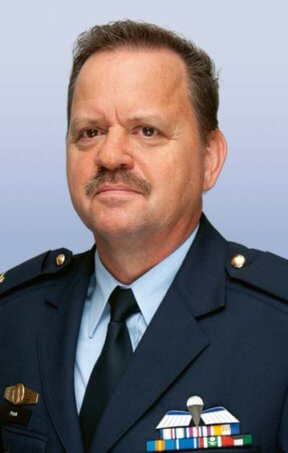Introduction
The Cold War timeframe is often looked upon as a gloomy era; however, it also provided positive things, like military, social, and relative political stability in Western Europe. The end of the Cold War gave impetus to countries to adapt their foreign policies, thus opening up an era of instability right at NATO’s eastern borders. In 1990, after the Iraqi invasion of Kuwait, a US-led coalition started preparing an adequate answer for what was considered Iraqi aggression.1 During Operation Desert Storm, the United States (US), the Netherlands, and latterly Germany, decided to deploy Surface Based Air and Missile Defence (SBAMD) forces to NATO’s border with Iraq, in eastern Turkey. In addition, the US and the Netherlands deployed PATRIOT SBAMD units into Israel.
Operation Desert Storm opened a new era of conceptual thinking regarding the application of military force in a high-tech networked battlefield and perhaps was the first example of a Multi-Domain/Joint All Domain Operation (‘MDO/JADO avant la lettre’). The operation presented the possibilities and advantages of networked operations. Theatre Missile Defence (TMD) was a significant part of Operation Desert Storm, and for the countries that owned PATRIOT systems, it became clear what advantages had been put in place. As a result, they managed to connect through tactical datalinks to higher and lateral units and receive valuable data that was not available in a stand-alone configuration. Although modern at the time, this conflict with occasional uncoordinated air and ground operations merely ushered in the interoperability revolution. Participating nations, and even within the countries’ different services, found that although you may have the same equipment and datalink protocols, it does not necessarily mean that you have connectivity, let alone interoperability. Big steps still needed to be taken towards establishing Network Centric Warfare.
Interoperability and Interconnectivity
The last decade of the 20th century proved critical for Integrated Air and Missile Defence (IAMD). NATO dismantled its Defensive Counter Air (DCA) belt, comprised of SBAMD systems and air defence fighters, that had provided comprehensive air defence and had protected NATO’s manoeuvre forces at the inner German border during the Cold War, and moved to a more flexible SBAMD cluster defence. At the same time, Command and Control (C2) was improved with the Surface-to-Air Missile/Control and Reporting Centre (SAM/CRC) interface system and air picture sharing in a Common Tactical and Operational Picture, which then became the norm. Shortly after Operation Desert Storm, the US, Germany, and the Netherlands, mainly due to their Theatre Air & Missile Defence cooperation experiences during that operation, started to work on improving their interoperability.2 In 1994, the first field trials took place between the Netherlands’ Air Force 5th SAM Battalion and the US 69th ADA Brigade, at the time, both were based in Germany. During NATO exercise Dynamic Guard in 1994 (Greece/Turkey area), Netherlands PATRIOT operators and US airmen created the first NATO network with Netherlands, a US Air C2 node (Mobile C2 Element) and an experimental Theatre Missile Defence Cell, equipped with Joint Tactical Ground System3 workstations. These successful tests led to the first full participation and integration of a Netherlands PATRIOT/HAWK battalion in the US exercise Roving Sands in 1995. In addition, it gave access to the Joint Project Optic Cobra TMD exercise, a US Forces Command Theatre Missile Defence live and simulated experiment.
Joint Project Optic Windmill 1996. © RNLAF, Bart van der Graaff
Joint Project Optic Windmill
The above-mentioned initiatives, often flowing bottom-up, were the main drivers for allied interoperability in that era. The lessons learned from Operation Desert Storm and the lack of sufficient TMD training opportunities in NATO, especially at the tactical level, made it clear that something was missing to properly prepare for future conflicts. The missing element was IAMD training, with an emphasis on integrated. As a result, a dedicated team of experts from the Royal Netherlands Air Force, the German Air Force, and US European Command (US EUCOM) took the initiative to organize a small-scale TMD exercise called Joint Project Optic Windmill (JPOW), complementary to the larger US exercises. The initial goal of this initiative was to bring TMD operations to a lower tactical level, to exercise, and to maximize the interoperability potential between the, at that time, three main PATRIOT users: the US Army, the German Air Force, and the Netherlands Air Force. The exercise not only provided an excellent training opportunity but also helped to develop procedures on how to connect different communication systems and operate as a networked group. JPOW 1 proved to be a great success and clearly filled a void in the exercise calendar for training in this field. As a result, JPOW became an annually recurring event.
The exercise grew when military doctrine transitioned from Network Centric Warfare towards Network Enabled Capabilities, as the new reference term and subsequently matured swiftly, especially when the US Ballistic Missile Defense Organization (currently, the Missile Defense Agency) became a main sponsor of the exercise and introduced state-of-the-art simulation techniques. Incorporating the CRC capability and NATO’s Air Component Command level enabled experimentation with DCA and TMD resource planning. Throughout the years, JPOW evolved and matured from a small-scale tactical-level TMD initiative to a leading IAMD exercise for both the tactical and operational levels throughout Europe. In 2000, NATO exercise Central Enterprise joined with JPOW and morphed into a unique Air C2 exercise employing live flying and simulated air and missile threats in one scenario. Additionally, JPOW exercises were often used by US units to familiarize themselves with NATO procedures.
The exercise sequels always intend to simulate fighting a battle that is to be expected approximately five to ten years in the future. This time frame enabled experimental systems or capabilities to play in as realistic as possible future scenarios and, whilst doing that, triggering operators to reconsider a future environment in which those experimental systems may have greatest effect. In 2008, at the Bucharest summit, US President G. W. Bush offered the US missile defence capability to NATO.4 At that time, the US intended to place ground-based interceptors in Poland and Romania as well as a large X-Band Radar in the Czech Republic. JPOW was the first exercise to provide a playground to experiment with the C2 of those types of capabilities. The US Strategic Command, Joint Functional Integrated Component Command Integrated Missile Defense, joined up with European planners to experiment with a Missile Defence Coordination Cell (MDCC) in the autumn of 2008. At that time, JPOW took place combined with the US homeland defence exercise Joint Project Optic Alliance. The experimental European MDCC provided coordination in the European theatre and liaised with the US homeland defence forces. MDCC further evolved during the following JPOW exercises and laid the basis for the current NATO Ballistic Missile Defence Operation Centre.
JPOW 4 Network 2001. © RNLAF, Bart van der Graaff
The JPOW Concept
JPOW is an exercise that can facilitate adequate room for experimentation and enable great training possibilities, shaped for optimal knowledge enrichment. Each sequel is set-up based on a previously proven concept, providing a stakeholder-created scenario coalescing all participants’ exercise objectives and embedding a thorough analysis of all operators’ actions. The analysis takes place in the daily debriefings at the tactical and operational levels. Proper employment of this feedback process and the direct application of lessons learned into the following day’s exercise with a slightly adapted scenario, if needed, enabled a steep learning curve and so-called ‘knowledge cross-fertilization’ amongst the participants. This set-up is unique to NATO.
JPOW is a Computer-Aided Exercise, and its network setup enables participation from De Peel Airbase in the Netherlands or play distributed via a Combined Federated Battle Laboratories5 network connection from home locations. Participants have the possibility to play with their real weapon systems (Hardware In The Loop), connect via a simulator or even play with a computer model (Constructive Simulation). The latter applies more in the case of Doctrine, Techniques, Tactics and Procedures (DTTP) development. All are embedded in one exercise network loop, along with simulated air and missile threats. As mentioned, there have even been JPOW editions that paired with live air operations, exercising specific procedures such as time-sensitive targeting. The exercise also contains an academic phase to prepare the participants, particularly underlining exercise novelties.
The JPOW exercise network, like actual operations, can be set-up at any location on earth. The JPOW project office experimented with this set-up by playing from locations other than De Peel Airbase, like Sigonella Naval Air Station in 2001 and NATO Missile Firing Installations in 2004 and 2006. The latter sets enabled JPOW to be combined with a live firing phase. Although these out of region JPOW exercises were extremely challenging and innovative, at the same time, they put a lot more stress on the ever-dwindling IAMD community.
Concept Development and Experimentation
Some particular ‘required circumstances’ cannot be accommodated in a realistic scenario and require an artificial storyline/setting. The exercise can facilitate these requirements through the Concept Development and Experimentation (CD&E) phase. JPOW distinguishes itself from other exercises by including a CD&E phase in the overall exercise set-up. This segment, which normally precedes the execution phase, offers participants the unique opportunity to demonstrate, practice, evaluate, and validate different IAMD programmes and concepts. DTTP can be developed, tested, validated, improved, and re-tested in a test-bed environment. NATO, partner nations, and NATO agencies and organizations make extensive use of this CD&E capability. During the latest editions of JPOW, there were four daily experimental lanes (different scenarios) performed in parallel. The possibility of implementing the lessons identified from the CD&E phase during exercise execution allows for immediate feedback and subsequently leads to improved learning opportunities.
Connecting with New Partners
In 2002, NATO began enhanced cooperation with the Russian Federation (RF) establishing a new body, the NATO-Russia Council (NRC),6 henceforth NATO being ‘committed to making an effective forum for consensus-building, consultations, joint decisions and joint actions’. One of the projects residing under the NRC was TMD, which has turned out to be one of the more promising fields of cooperation.7 A delegation of the RF armed forces visited JPOW in 2004 and were impressed by the exercise. In 2005, a JPOW crew supported and facilitated the first European-based NATO-Russia TMD exercise at De Peel Airbase. JPOW personnel also supported subsequent events in Russia. Due to changes in the geopolitical setting, the NRC TMD project slowed down and finally went dormant in 2012.
The change of the overall security situation due to RF posturing attracted the interest of two NATO partner nations, Finland and Sweden, for increased participation in JPOW. The integration of partner nations brings new challenges, like their integration in real time operations. Military/Industrial Foreign Disclosure restrictions, prohibiting access to NATO SECRET networks, have led to the creation of a filtered/parallel network that has been used and improved since JPOW 17 and has enhanced NATO partner integration.
From the Phoenix and Beyond (2017–2021)
In 2012, the Netherlands PATRIOT units, along with German and US SBAMD units, deployed yet again to NATO’s south-eastern border.8 JPOW being an exercise highly dependent on the support of the hosting Netherlands Joint SBAMD Command, saw the deployment have a significant impact on the manning available for exercise preparation. It must be considered that nearly all exercise control groups are manned by soldiers doing the exercise preparations, in addition to their normal jobs. The upshot was that in 2013 only a small-scale exercise could be held, subsequently proving the infeasibility of continuing the standard JPOW effort.
After the two-year deployment, the equipment went into an extensive and much-needed maintenance period. It was not until 2016 that a small-scale, mainly German/Netherlands version, called ‘Constructive Optic Windmill’, was organized to enable a renaissance in the specific JPOW expertise development. Not surprisingly, the phoenix was chosen as the crest for JPOW 2017.
The challenge was to help JPOW rise again from the ashes and get back on its flight path. In 2010, JPOW had close to 2,000 participants from ten NATO nations and entities; playing either from De Peel Airbase or their home locations, ranging from Rome to El Paso and numerous other places worldwide. The 2017 version was a great comeback with the involvement of over a dozen NATO and partner nations, the vast majority participating from De Peel Airbase.
Since 2019, a Combat Enhancement Training/Force Integration Training (CET/FIT) phase was added to the JPOW schedule. Consequently, it enabled better integration of forces from outside the NATO theatre while leading to a better focus on the scenario and settings for all players. At the same, time this minimized the loss of playing time due to the unfamiliarity usually experienced during the first days of the exercise. In 2021, JPOW was intertwined with the NATO exercise Steadfast Armour. Although hampered by COVID-19, the 2021 version proceeded with great success, making maximum use of the distributed option that JPOW has to offer.
Currently, JPOW is a German/Netherlands-led exercise that enjoys strong support from US EUCOM, taking place every two years. JPOW has already proven to be a valuable tool in supporting NATO air operations by improving planning and C2 procedures throughout the domain of IAMD. Forged by corresponding IAMD stakeholders, JPOW offers important training opportunities and consistently reflects relevant IAMD issues. The combination of academics, a flexible CD&E, and CET/FIT phases to the actual exercise construct has proven highly effective. NATO regularly expresses its appreciation for JPOW, particularly for its flexible exercise set-up enabling the validation and testing of new ideas and concepts. A considerable part of NATO’s IAMD procedures, as well as parts of its current command structure, were developed and are evaluated during JPOW exercises.
The JPOW exercise is constantly adapting to the changing security environment and is always trying to stay ahead of changes in this arena. This bottom-up developed exercise will continue to remain an important cornerstone for NATO IAMD training.
Acknowledgement
This article is dedicated to: Lieutenant Colonel (ret.) RNLAF Bart van der Graaff
Thank you for offering your valuable advice and warm comradeship.














